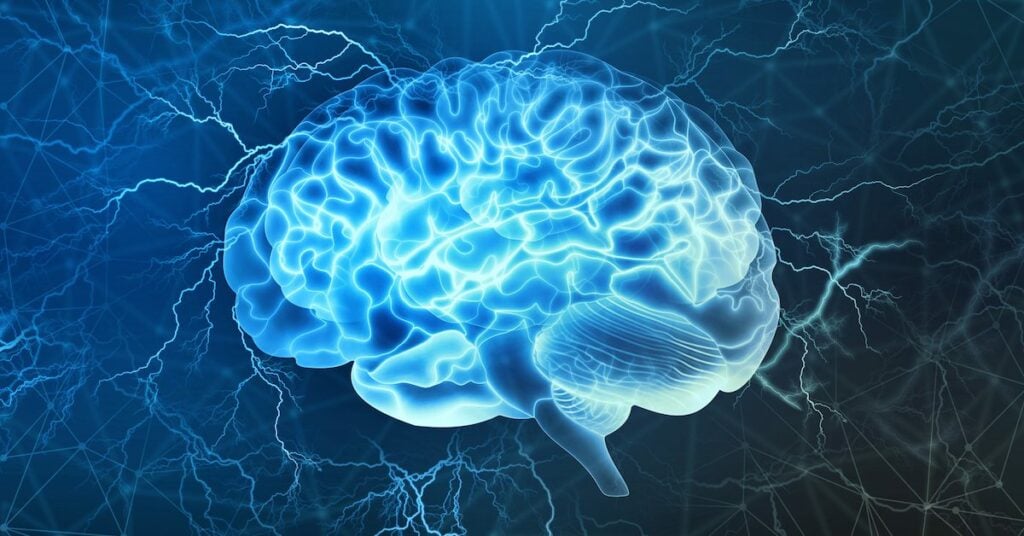Anxiety: Symptoms, types, diagnosis, and treatment
Reviewed by Robert Bogenberger, PhD

What is anxiety?
Anxiety is a state of worry or apprehension. In small doses, it can be a healthy response to stress by giving us an extra push to study for an exam or make a great impression on a first date. It’s our body’s way of helping us think about and prepare for the future.
Too much anxiety, though, can harm us. Anxiety disorders develop when anxious feelings grow too strong or last too long. Instead of giving us a temporary boost, these disorders can drag us into overwhelming worry and fear, making it hard for us to function.
Fear vs. anxiety
We often use the words “fear” and “anxiety” interchangeably, but they refer to slightly different emotional experiences. We feel fear in response to something specific that we can see in the present moment, whether it’s an object, situation, or circumstance. With fear, the threat is immediate and known.
We feel anxiety in response to something we’re anticipating: a future threat that’s unknown or vague, such as worries about our health, family, or future.
Stress vs. anxiety
We all experience stress about exciting and challenging aspects of our lives. Stress is our body’s response to a specific challenge or struggle, and it usually goes away after the event or situation is over. However, anxiety may or may not be tied to something specific—and unlike stress, it sticks around.
While they’re different experiences, stress and anxiety often go hand in hand, and stressful situations can trigger anxiety.
Depression vs. anxiety
Our awareness and understanding of anxiety and depression have increased dramatically in recent years. These two terms also aren’t interchangeable. Anxiety disorders and depression are different mental health conditions. They share some symptoms—and you can be diagnosed with both at once—but it’s important to understand how they diverge.
Both types of disorder involve overwhelming feelings that can seem permanent. But their emotional foundations are different. Fear and worry are at the heart of anxiety disorders, while hopelessness and sadness are at the heart of depression.
Anxiety symptoms
Physical symptoms
- Rapid heart rate and/or heart palpitations
- Difficulty breathing
- Dry mouth
- Shakiness or dizziness
- Muscle tension
- Sweating
- Nausea or gastrointestinal problems
- Insomnia
- Restlessness
Mental symptoms
- Uncontrollable worry (also called “rumination”)
- Feelings of dread or doom
- Difficulty concentrating
- Irritability
- Avoidance of triggers (people, places, things, or situations) that worsen your anxiety symptoms
Types of anxiety
Generalized anxiety disorder (GAD)
If you have GAD, you struggle with constant worry for at least half the year, mainly about ordinary parts of life. Instead of having a specific focus for your anxiety, you feel anxious about many things at once—work, school, relationships, money, health. Anxiety may seem to seep into every aspect of your life.
Panic disorder
If you have panic disorder, you have panic attacks: short episodes of excessive anxiety and fear that come and go quickly but are often hard to shake. You may have additional anxiety about when the next panic attack will strike.
Symptoms of a panic attack include:
- Difficulty breathing
- Rapid heart rate
- Heart palpitations
- Sweating
- Shaking
- Lightheadedness
- Dread
- Feeling a loss of control
Phobias
A phobia is a kind of anxiety disorder that causes specific, persistent anxiety. With a phobia, you have excessive or irrational fears about a specific person, place, thing, or situation. You’ll often go out of your way to avoid the cause of your fear in ways that disrupt your daily life.
Common phobias include:
- Agoraphobia: Fear of leaving your home, often centered around being trapped in crowds or public places
- Social anxiety (or “social phobia”): Fear of embarrassment or judgment in social situations
- Separation anxiety: Fear of being separated from a parent or parental figure
- Health anxiety: Fear of illness or poor health (formerly called “hypochondria”)
- Selective mutism: A child’s fear of speaking, even when they have the skills to do so
- Specific phobia: Intense fear about a specific object or situation (like heights, animals, or flying)
What causes anxiety?
The causes of anxiety can be divided into two categories: “risk factors” and “triggers.” Risk factors increase your likelihood of developing an anxiety disorder, and triggers contribute to specific episodes of anxiety or panic.
Risk factors for anxiety
- Genetics: If a relative has been diagnosed with anxiety, you’re more likely to develop an anxiety disorder as well.
- Trauma: Trauma can affect us physically and psychologically. You may suffer from panic attacks or other forms of anxiety after experiencing trauma.
- Substance abuse: The relationship between anxiety and substance abuse is a cycle. Increased substance abuse can cause anxiety, and anxiety disorder symptoms may push people toward substance abuse as a coping mechanism.
- Other health conditions: Medical conditions like hyperthyroidism and asthma can have similar symptoms as anxiety and panic. This may increase your likelihood for an anxiety disorder. In addition, dealing with a serious health condition can be stressful or even traumatic, creating a greater risk for anxiety.
Triggers for anxiety
- Stress: You may develop an anxiety disorder in response to ongoing high levels of stress in any area of your life: financial, professional, or relational.
- Caffeine: Because it’s a stimulant, caffeine can speed up your heart rate and cause shakiness, insomnia, and gastrointestinal problems. This may worsen anxiety symptoms and trigger anxiety or panic.
- Not eating regularly or not eating enough: Skipping meals or restricting your food intake can cause lightheadedness, shakiness, and gastrointestinal problems, contributing to anxiety symptoms.
- Social events: If you suffer from social anxiety or agoraphobia, social situations may trigger a panic attack.
- Lack of sleep or trouble sleeping (insomnia): Not getting enough sleep can increase your stress levels and worsen anxiety symptoms like irritability, difficulty concentrating, and muscle tension.
- Life transitions: Even happy transitions like having a baby, starting a new job, or starting a new relationship can bring stress and trigger your anxiety.
- Health problems: Health issues can cause a great deal of stress, which can trigger anxiety. If a loved one suffers from a health problem, your anxiety may increase as well.
How do I know if I have anxiety?
Everyone experiences anxiety at some point in their life. If you think you may have an anxiety disorder, there are steps you can take to know for certain:
- Keep track of your symptoms: When you feel anxious, write down what you’re experiencing. Try to pinpoint the cause of your feelings—even if that cause is something ordinary, it’s helpful to write it down. By keeping track of your symptoms and triggers, you can capture crucial information that will help a medical professional give you a more accurate diagnosis.
- Ask your doctor: An online anxiety quiz won’t provide an accurate assessment of your mental health. Only a medical professional can give you a diagnosis. Schedule an appointment with your primary care doctor and share your concerns with them.
- See a therapist: Your doctor can give you a referral to a therapist, or you can look for one on your own. A therapist can give you a professional diagnosis and offer treatment for your anxiety disorder.
Related disorders
It’s fairly common to be diagnosed with another disorder alongside anxiety, and you may develop anxiety in response to trauma or other mental health disorders.
Disorders related to anxiety include:
- Depression
- Obsessive-compulsive disorder (OCD)
- Post-traumatic stress disorder (PTSD)
- Eating disorders
- Addiction
How to treat anxiety
Most long-term anxiety treatment plans include psychotherapy (also called “talk therapy”), medication, or a combination of both. There are also steps you can take in the moment to treat acute anxiety symptoms or even a panic attack.
Psychotherapy
These types of psychotherapy can help treat anxiety disorders:
Cognitive behavioral therapy (CBT)
CBT is the most common and successful kind of talk therapy for anxiety disorders. It helps you identify and challenge unhelpful thoughts or beliefs that feed your anxious behavior, so you can develop healthier patterns of thinking. This change in thinking (“cognition”) ultimately leads to a change in how you live your life (“behavior”).
Exposure therapy
Exposure therapy is another method of treating phobias and other anxiety disorders. In this type of treatment, you confront your fear in one of four ways:
- Direct, physical exposure
- Imaginary exposure
- Virtual reality exposure
- Sensation-based exposure
The key to exposure therapy is that it’s a safe experience guided by your therapist. Many people mistakenly think exposure therapy relies on tricks or deceit to put someone in situations they’re afraid of. This isn’t the case.
The goal of exposure therapy isn’t to force you into a situation so you can “get over it” quickly, but to gradually expose you to your fears so you can learn that those fears are misplaced. With time and repeated exposure, you learn to stop avoiding your fears and can improve your quality of life.
Mindfulness
Your therapist may teach you mindfulness techniques alongside other forms of talk therapy to help reduce anxiety symptoms. Mindfulness teaches you to focus without judgment on the current moment instead of thinking deeply about the past or worrying about the future. In mindfulness, you also focus on any of your physical senses—sight, smell, touch, sound, or taste—to help calm your mind.
If professional help isn’t available to you at this time, mindfulness apps like Calm can be a good short-term option.
Anxiety disorder medications
If you have an anxiety disorder, your doctor may prescribe medication. These medications can reduce the intensity and frequency of your symptoms.
Your anxiety medication will likely be for one of two things:
- Short-term relief of current symptoms (medications include benzodiazepines, sedatives, beta blockers, etc.)
- Long-term symptom management (medications include antidepressants, buspirone, etc.)
Self-care steps for anxiety and panic
In addition to getting help from a health care professional, you can take these steps on your own to try to decrease anxiety or panic in the moment:
- Breathe deeply: Take a deep breath in. Slowly let it out. You may find it helpful to count—for instance, breathing in for four seconds, holding your breath for four seconds, and breathing out for eight seconds.
- Limit stimuli: Close your eyes. Find a quiet place.
- Practice mindfulness: Check in with your five senses. Clear your mind and allow yourself to notice what you’re feeling without judging it. Meditate. Introduce soothing sensations, such as relaxing smells or soft candlelight.
- Go for a walk: Our bodies respond positively to exercise and motion, as well as being in nature. If you can, take a walk outside.
- Tell a friend: Panic attacks often leave us feeling scared and alone. Talking with a friend or family member can help you remember this truth: You are not alone, and you are loved.
Get help now
If you’re struggling with anxiety, browse our directory to find a specialist in your area—or learn how to choose a therapist who’s right for you.
If you’re in crisis, help is available now. For free, confidential 24/7 support, call or text the 988 Lifeline at 988.
About the author
The editorial team at therapist.com works with the world’s leading clinical experts to bring you accessible, insightful information about mental health topics and trends.
Related articles

Anxiety and depression: How they’re related and can be treated
Anxiety and depression have some symptoms in common and often happen together...

’Tis the season for holiday stress and anxiety
Most of us feel some level of stress around the holidays. These suggestions can...

Transcranial magnetic stimulation (TMS): Uses and risks
Transcranial magnetic stimulation (TMS) therapy is an effective, relatively...

Taking our anxiety back to school
Heading back to school feels much heavier than it used to. Follow this...